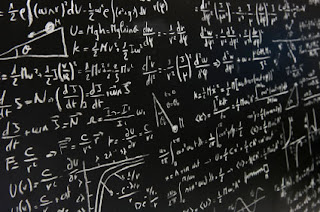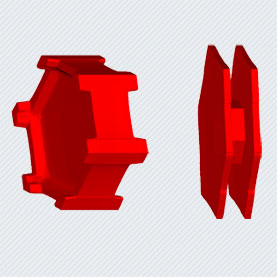From Greg Laden's Blog: Evolution of the Moon
From Greg Laden's Blog: Evolution of the Moon
| "To boldly go where no man has gone before." TOS, images wiki |
Physics arXiv:
Dispelling the myth of robotic efficiency: why human space exploration will tell us more about the Solar System than will robotic exploration alone,
Ian A. Crawford, Department of Earth and Planetary Sciences, Birkbeck College London
Some of the incredible things in this presentation that I saw:
Being a scientist, technologist, engineer or mathematician (S.T.E.M. nerd), means you're versed and skilled in The Scientific Method. In a laboratory and workplace that reflects the diversity of humanity, that is the one unifying truth that must be adhered to to get work accomplished.
I am still waiting for a political debate where the questions are moderated by a S.T.E.M. panel. A true "no-spin zone." The answers and outcome would be, in Spock's words, "fascinating."
Any knowledge that undermines a personal faith, is in the end, no faith at all...
The Gated Community Mentality, NYT Opinion article by Richard Benjamin, author of “Searching for Whitopia: An Improbable Journey to the Heart of White America”and a senior fellow at Demos, a nonpartisan research center
So, how far have we advanced since the '60s?
Physics World: The Challenges of 'big science'; Big-Science Supplement
 |
| Credit: Physics World |
...and, it's NOT an "April Fool's" joke!
Physics World: 'Nanorefrigerator' is cooled using sunlight
 |
| Discover Magazine |
2 The great 19th-century mathematician Carl Friedrich Gauss called his field “the queen of sciences.”
3 If math is a queen, she’s the White Queen from Alice in Wonderland, who bragged that she believed “as many as six impossible things before breakfast.” (No surprise that Lewis Carroll also wrote about plane algebraic geometry.)
4 For example, the Navier-Stokes equations are used all the time to approximate turbulent fluid flows around aircraft and in the bloodstream, but the math behind them still isn’t understood.
5 And the oddest bits of math often turn out to be useful. Quaternions, which can describe the rotation of 3-D objects, were discovered in 1843. They were considered beautiful but useless until 1985, when computer scientists applied them to rendering digital animation.
Discover Magazine: 20 Things You Didn't Know About...Math
| PhDComicsdotcom |
 |
| A MULTIFACETED PROBLEM: Realistically simulating the growth of snowflakes has proved a huge challenge. Above, two examples of faceted snowflake structures. Image: Barrett/Garcke/Nürnberg |
Kind of late for this article, but it was a very mild winter in the northeast. To next winter:
 |
| 1000 Awesome Things |
Scientific American: Snowflake Growth Successfully Modeled from Physical Laws
Many factors affect global and regional climate, including planet-warming "greenhouse" gases, solar activity, light-scattering atmospheric pollutants, and heat transfer among the land, sea, and air, to name just a few. There are so many influences to consider that it makes determining the effect of any one factor—despite years and sometimes decades of measurements—difficult.
* Now: Command, Control, Communications, Computers and Intelligence - C4I.
AAAS Science Mag: Earth Warming Faster Than Expected

Related links:
Physics arXiv: Red Wine, Tartaric Acid, and the Secret of Superconductivity
 |
| Good Technology |
A battle for the grid emerged from the Apple and Microsoft of the Gilded Age. Thomas Edison, who invented many devices that used DC power, developed the first power transmission systems using this standard. Meanwhile, AC was pushed by George Westinghouse and several European companies that used Nikola Tesla's inventions to step up current to higher voltages, making it easier to transmit power over long distances using thinner and cheaper wires.
The rivalry was fraught with acrimony and publicity stunts -- like Edison electrocuting an elephant to show AC was dangerous -- but AC eventually won out as the standard for transmission, reigning for more than a century.
Scientific American: Edison's Revenge - Will DC Make a Comeback in the US?
 |
| Technovelgydotcom |
Gizmag: MIT researchers create camera that can see around corners
 |
| NIST Photo |
 |
| Starts With a Bang! |
 |
| Ars Technica - link below |
This produced an environment where the material's electrons behave remarkably like relativistic particles, with a "speed of light" that they can adjust. Additionally, the researchers could change the spacing between molecules in a way that the masses of the quasiparticles changed, or cause them to behave as though they are interacting with electric and magnetic fields—without actually applying those fields to the material. This setup will potentially help us explore new physics that may arise in these environments.
Wikipedia: Higgs mechanism
Ars Technica: Researchers mimic relativity and the Higgs field in graphene-like material